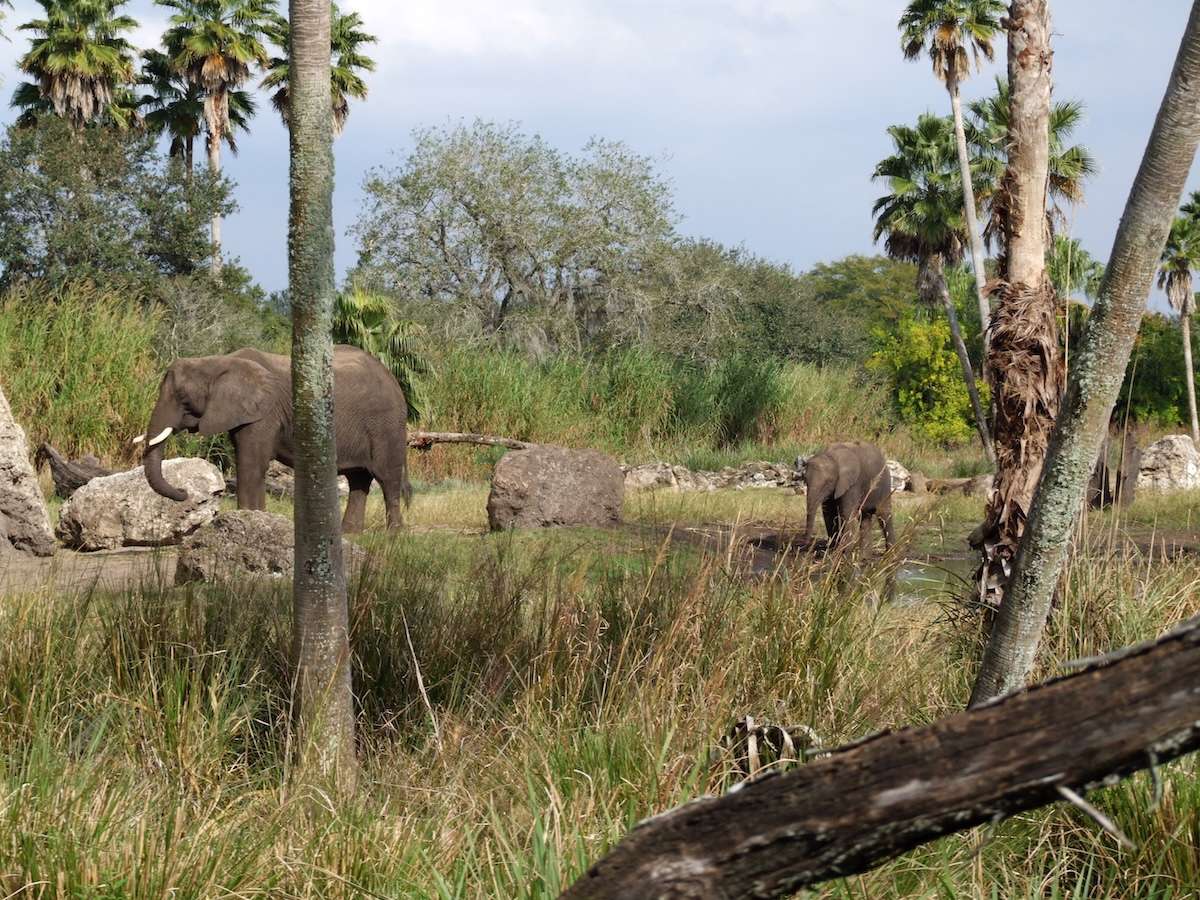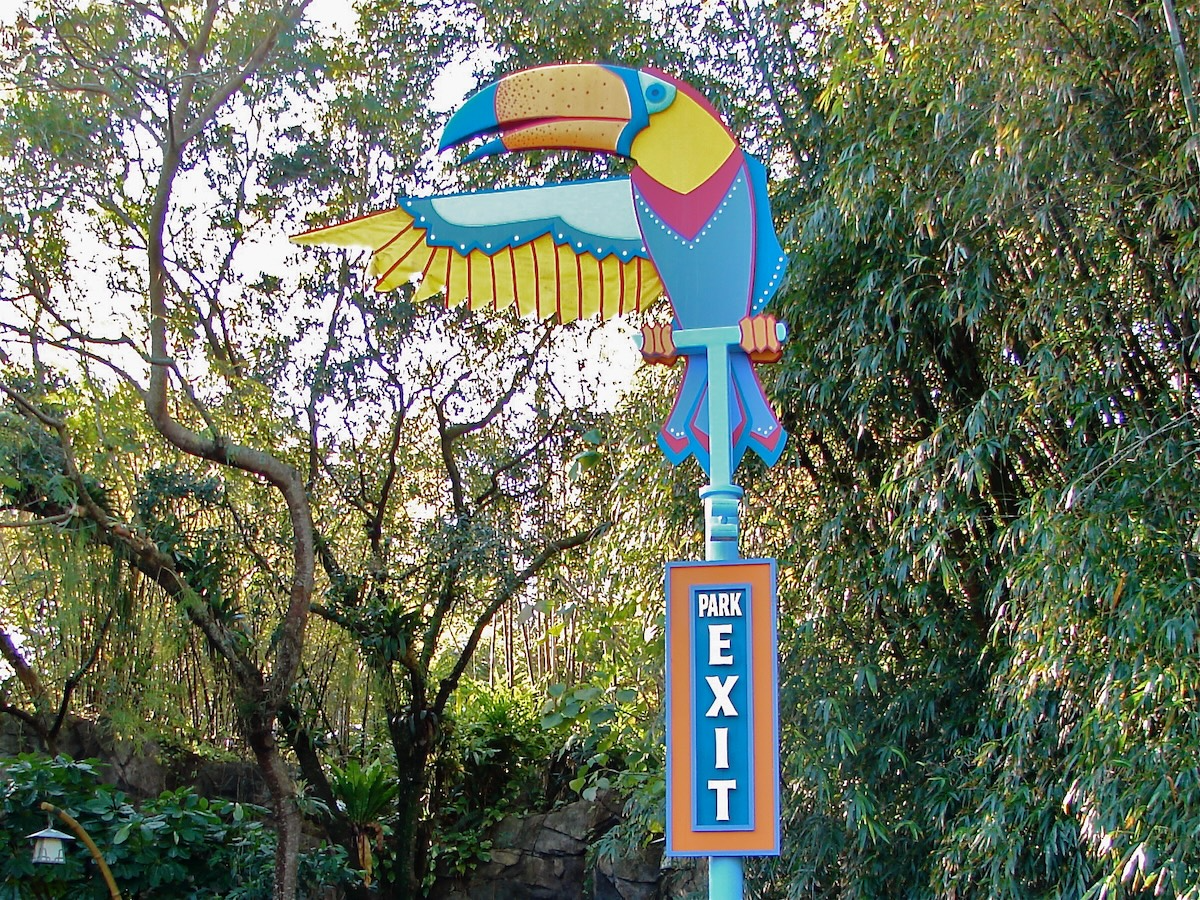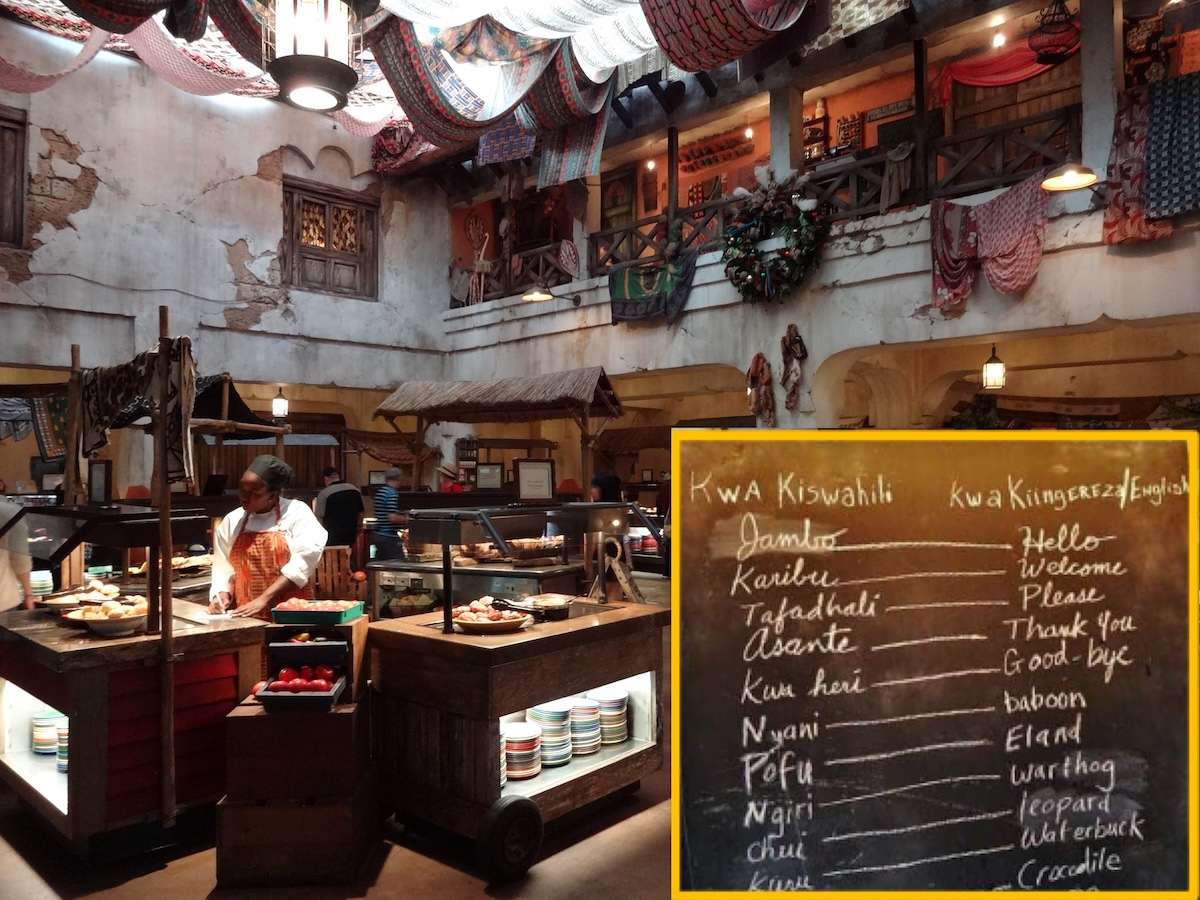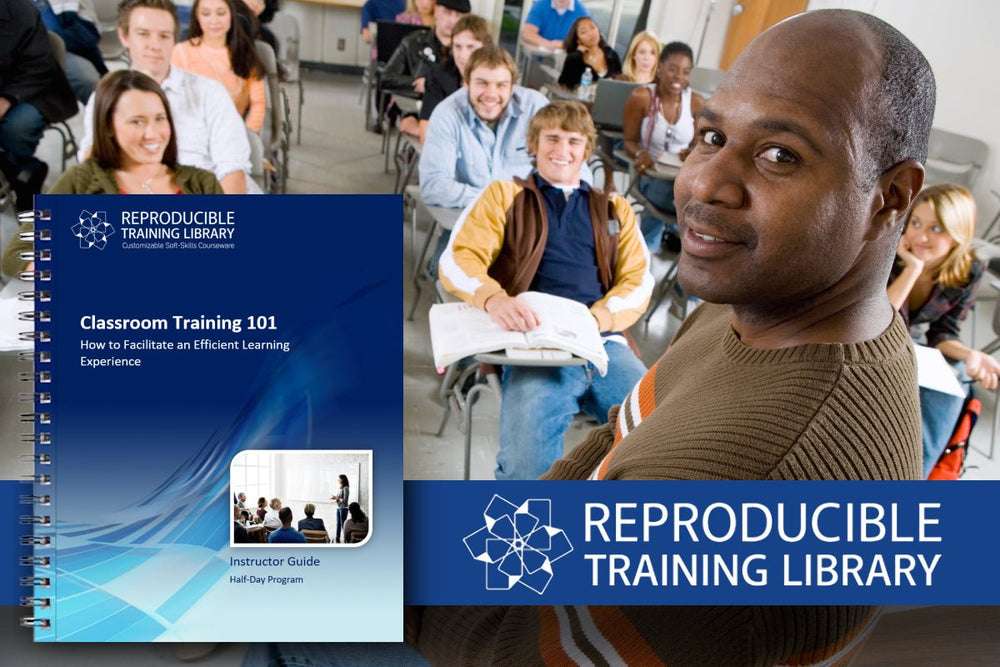Where Are the Signs?
When we arrived six months before opening, many areas of the park still needed to be built. My supervisor took me to a desolate area that would soon become Camp Minnie-Mickey. It was hard to imagine. All I saw was mud.
Additionally, there were no directional signs. We assumed that those would arrive later but soon discovered an Imagineering twist. There would be no signs. DAK had a vision. Each of the Walt Disney World parks has its own theme. (Magic Kingdom‘s theme is fantasy, Epcot’s is discovery, and Disney-MGM Studios’ is action.) Designed by master Imagineer and creative visionary Joe Rohde, this park’s theme would be adventure.
The idea seemed logical: Let the guests have a true adventure, just as they would if visiting the jungles of the world. Accordingly, guests would simply “explore” their way around the park without the benefit of signs.
The park officially opened on April 22, 1998, to lost and confused guests. And to make the adventure even more confusing, the park hub was called Safari Village. Guests would, logically, ask cast members working in Safari Village where they could board the safari. But the Kilimanjaro Safari ride wasn’t in Safari Village. It was down the road, at the very back of the Africa section. It was the premier ride in the park, but to find it, you had to cross a bridge and walk all the way to the back of an African village.

A Path to Nowhere
In the spirit of adventure, there was even a path to nowhere. Located between the Africa and Asia sections of DAK, that path looked like a real walkway. Guests would start down the seemingly well-appointed path and end up in the woods with nowhere to go but back to where they entered. Rohde explained that not every path leads somewhere, and a large part of an adventure is exploring.
Well, this path actually did lead somewhere: to Guest Relations, where befuddled guests filed complaints. For pictures of that lost path, visit Prkology.com.
Creating Direction
Finding Guest Relations presented another problem. Guest Relations was next to the park’s exit. You couldn’t see that exit once you were inside the park. Several times a day, guests would approach front-line cast members and ask how they could escape from the “jungle.”

But if there is one thing Disney does well, it’s listening to its guests and giving them what they want. Temporary directional signs were quickly installed, followed by more permanent, fully themed ones. There are now signs everywhere, including the one pictured above, that, in a first for a Disney park, tell the guests how to escape. And to clarify where the safari ride actually was, Safari Village was renamed Discovery Island. And that path in the woods? It is now overgrown and ignored.
Training Lessons for Professionals
I learned some valuable corporate training lessons from this experience. As training professionals, we need to
- Name our materials in ways that will make sense to the trainees. Cute names are fun, and discovery without direction is a trainer’s dream, but if we stray too far from the path, trainees will get lost.
- Make it easy for trainees to navigate their way through the training content. Even during times of austerity, we need to provide the materials they need to learn properly.
- Change our delivery and methodology if trainees are struggling. They’re new. They follow where we lead. But we, like the Imagineers, are professionals. When something isn’t working, take a different path, even if that path is not what you want.
- We’ve done it before and have a tendency to explore new ways and ideas. But for our trainees, this is the first time. They need to feel safe in our “jungle.” Innovation is good. But training needs to be grounded in basics.
We ignore these corporate training insights at our peril, and at the peril of our trainees lost in the woods.
A Lesson in Assumptions
Believe it or not, I learned another, somewhat embarrassing, lesson regarding signs while working for Disney.

Getting the park up and ready for guests posed a number of other challenges. One of them was the flood of arriving cast members who all needed to be trained at the same time. We commandeered every location inside the not-yet-open park, including every room in the African-themed Tusker House restaurant. In one of the side rooms, we ran the Entertainment orientation program, Pride Guide.
During one class, I got a warning from my trainer that a senior leader had walked through the room during class and taken special notice of a blackboard (see insert above) in the room. That blackboard featured the English words for animals in the Africa section of the park, along with their Swahili translation.
An email soon went out from that leader praising our trainer and training program for being so authentic and teaching the Swahili words. The only problem was that we weren’t. We were training character performers who had no need to talk.
The writing on the blackboard was a design element placed there by Imagineering as a part of the room decor. A Disney corporate leader doing a 90-mile-per-hour walkthrough did not know that and did not take the time to actually listen to what was being taught. Instead, he assumed. Our boss had to explain the situation to the leader, who then had to contact the corporate leader. The email quickly got retracted.
Has this ever happened to you? Or to your organization’s leaders? Or your fellow trainers? We sometimes think we know more than we do and make assumptions without first discovering the facts. It can be especially dangerous if it occurs during a training program where one wrong fact has the potential to cause a trainee to misstep.
These moments serve as powerful corporate training insights – reminders to verify before we assume. Generally, it’s good to move quickly, but a little caution is a useful thing. Otherwise, your good intentions could get lost in translation … or in the woods. Instead, turn the path to nowhere into the path to know where.
Summary: From Jungle to Clarity
My time at Disney taught me that vision and innovation are important – but they must be balanced with clarity and direction. Whether you’re guiding guests through a theme park or trainees through a learning experience, the principles are the same. The goal isn’t to eliminate exploration – it’s to provide a map that ensures no one gets lost.






























